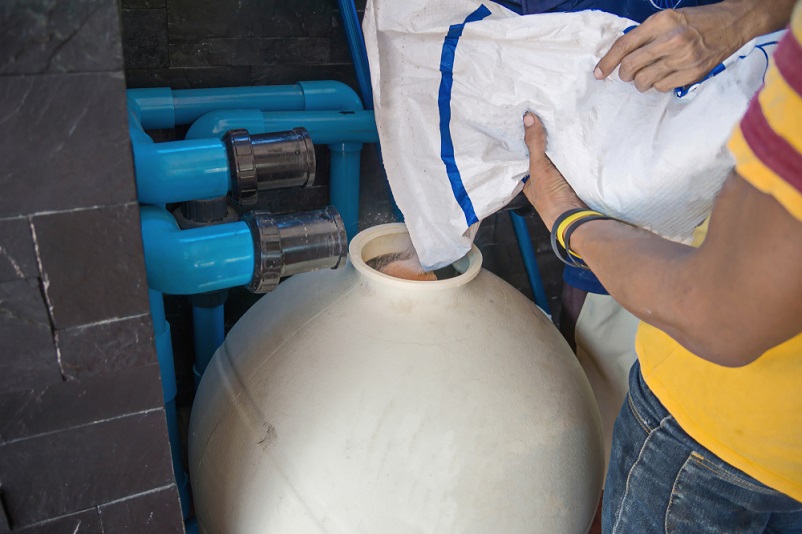A sand filter is an essential part of many above-ground pools. Without good water filtration, debris will eventually cause damage to the pool liner causing it to leak and ultimately fail.
Sand filters and skimmers remove debris such as leaves, sticks, twigs, and dirt. They also prevent algae from growing in the pool.
How Sand Filter Works To Maintain Your Pool
When you first buy your pool, you will need to purchase a sand filter.
The type of filter you choose depends on how much water you have in your pool. If you have a small inflatable pool of 1,000 gallons, you can get by with very inexpensive pump and simple filter combination unit that you can plug into a 110V AC outlet.
If you have more than a few 1,000 gallons, however, it is best to go with a sand filter. You will need to replace the filter every year, depending on how often you clean it.
A sand filter has several main components: the sand filter, the water pump, and the skimmer.
The filter holds the sand through which dirty water is cleaned. The basket for the sand is typically made out of plastic or metal mesh. The mesh allows water to pass through but traps most of the debris in the filter.
The pump moves dirty return water into the filter. Most pool pumps run on 220V AC and need an electrician to install properly.
The skimmer removes debris from the surface of the water before it drops onto the floor of the pool where is it harder to get at.
A pool skimmer consists of a screen that catches debris and a tube that carries the water away from the pool and into the sand filter fin a final rinse.
Debris and Organics Filtered by Sand
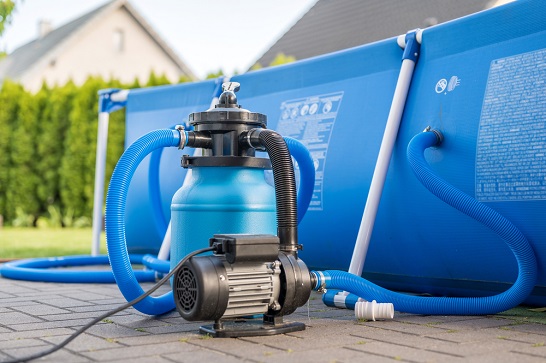
Your sand filter will capture a wide variety of materials including twigs, leaves, bugs and even larger biologicals like algae.
Larger materials such as leaves, gravel, and bugs won’t be able to pass through the sand at all, but should be captured by the pre-filter screen, sometimes called a catch, prior to entering the sand filter.
Smaller materials will be caught in the sand filter canister. That said, sand filters cannot capture particles smaller than 20 microns in size. 100 microns in size are often the low limit.
Smaller particles that initially pass through the filter may be filtered out later if the water in your pool is cycled back through the filter.
How To Replace A Sand Filter For Your Above Ground Pool
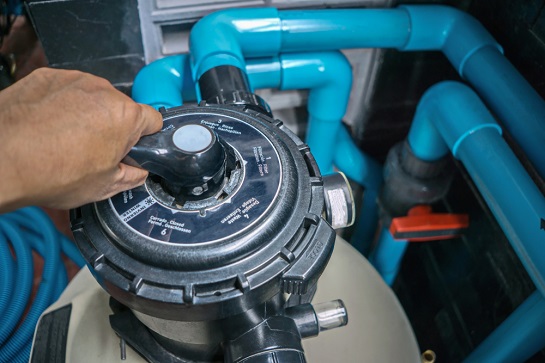
To install a sand filter, follow these steps:
Step 1: Remove the old filter
Remove the old filter from the pool. Make sure to take all the debris out of the filter basket.
Step 2: Clean the filter basket
Clean the filter basket thoroughly. Use soap and hot water to wash the filter basket.
Step 3: Place the new filter in the pool
Place the new filter in the filter housing. Check to make sure the filter fits snugly inside the filter housing.
Step 4: Connect the plumbing
Connect the plumbing to the filter.
Step 5: Test the filter
Test the filter to see if there are leaks. Then, turn on the pump and check for leaks.
Step 6: Fill the pool
Fill the pool until the water level reaches the top edge of the filter.
Step 7: Add chlorine
Add chlorine to the pool.
Step 8: Cover the pool
Cover the pool with a tarp.
Step 9: Wait for 24 hours.
Wait at least 24 hours after adding chlorine before using the pool.
Step 10: Enjoy!
Enjoy swimming in your newly-cleansed above-ground pool.
Tips On How To Keep A Sand Filter Working Properly
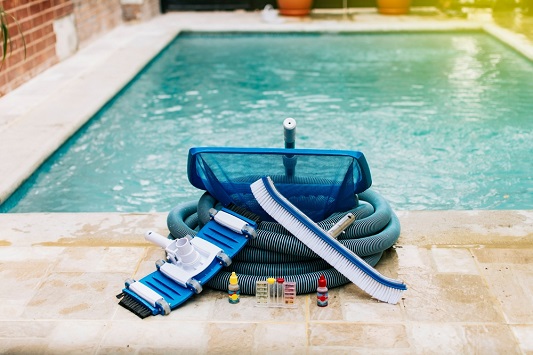
Regular cleaning of a sand filter is essential. This prevents clogs and reduces maintenance costs.
It is essential to keep the filter clean because this helps prevent algae growth and excess pressure on your pump system. Algae grows when there is an excess amount of nutrients in the water.
Algae blooms cause problems such as staining of the pool walls and leaves. They also reduce the effectiveness of the filter.
You must clean the filter frequently to avoid backing up the system. This may involve removing and replacing the sand filter cartridge containing debris and biologicals.
When you remove the filter, do not throw it away. Instead, please place it in a bucket filled with warm water. Let it soak overnight. Then drain the water and rinse the filter.
If you notice any signs of damage, you should replace the filter container/mesh immediately.
Sand filters should be replaced every year. However, some people recommend replacing them every two years.
Replacing the filter is easy. You need to unscrew the old filter and screw in the new one.
Keep in mind that most sand filters will only last a few years. After that, you will have to buy another one.
Cleaning a Sand Filter
To clean a sand filter in place, pour about 1/2 cup of sand filter cleaner into one of your skimmers and let it run for a few minutes.
Then turn your system off for 8 hours or so. Backwash the filter to remove the loosened debris.
Tips for Cleaning a Sand-Filtered Pool
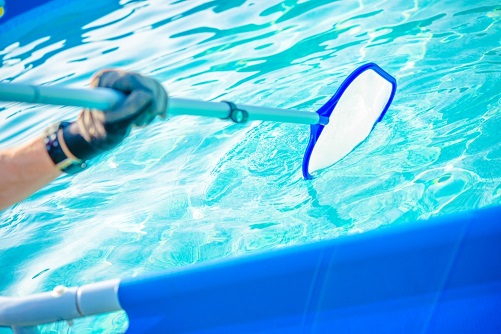
When cleaning a sand-filtered pool, remember to avoid using harsh chemicals. These chemicals could harm the pool’s equipment.
Use a soft brush to scrub the inside of the filter gently. Do not use abrasive cleaners.
Do not use soap or detergent. Use only water.
Avoid using a vacuum cleaner. Vacuums can scratch the surface of the pool.
Clean the filter every month. If you wait longer than a month, the filter may become clogged.
Keep children away from the pool during cleaning. Children can easily swallow small objects.
Sand Filters vs. Skimmers
Skimmers are used to skim floating debris from the pool water’s surface. Skimmers are often used in conjunction with a sand filter.
However, skimmers are not effective at removing large pieces of debris. In addition, skimmers cannot remove algae.
Sand Filters Vs. Pump-Outs
Pump-outs are used to draw water from the bottom of the pool and force it back up to the surface. Pumps-outs are used instead of pumps to reduce the amount of electricity required to operate the pump.
Pump-outs can also be used to circulate the water in the pool. Circulating the water helps keep the pool free of algae.
FAQs

Q: What type of pool filter should I install?
A: A sand filter is an excellent choice for most above-ground pools. It provides high levels of filtration while maintaining low operating costs.
Q: How long does a sand filter last?
A: The life span of a sand filter depends on how much time you spend maintaining it. Most experts agree that a sand filter lasts between 5 and 7 years.
Q: Can I use my existing filter?
A: Yes. You can use your current filter as long as it meets the requirements listed by the manufacturer.
Q: Is there anything else I should know before installing a sand filter?
A: Before purchasing a new sand filter, ensure the pool has been properly maintained. This includes regular testing and cleaning.
Q: Will my pool need more chlorination after installing a sand filter?
A: No. Chlorine is added to pools to kill bacteria and prevent algae growth. However, adding too much chlorine can damage the pool’s equipment. Therefore, it is best to balance chlorine and calcium hardness.

